


Based on a fragment of a single audio-recording made in Mexico City in April 2021. The work registers the rich landscape and experience of social life on a public square, interrupted by visual interludes from a personal archive. It invites us to tune in to the sounds of people, machines, animals, and the lower frequencies involved in the quotidian living around the square, shifting the focus between the audible, the sensible, the visible and the imaginable.
Film, Editing, Sound: Alondra Castellanos Arreola. Duration: 17min. Thanks to: Isaac Marrero Guillamon, Ricardo Leizaola. Support: Prins-Bernhard Cultuurfonds, Niemeijer Fonds in the Netherlands.
Screenings: (2021) Visual Anthropology Showcase, Goldsmiths University of London, United Kingdom, (2023) Studios Guadalajara90210, Mexico.

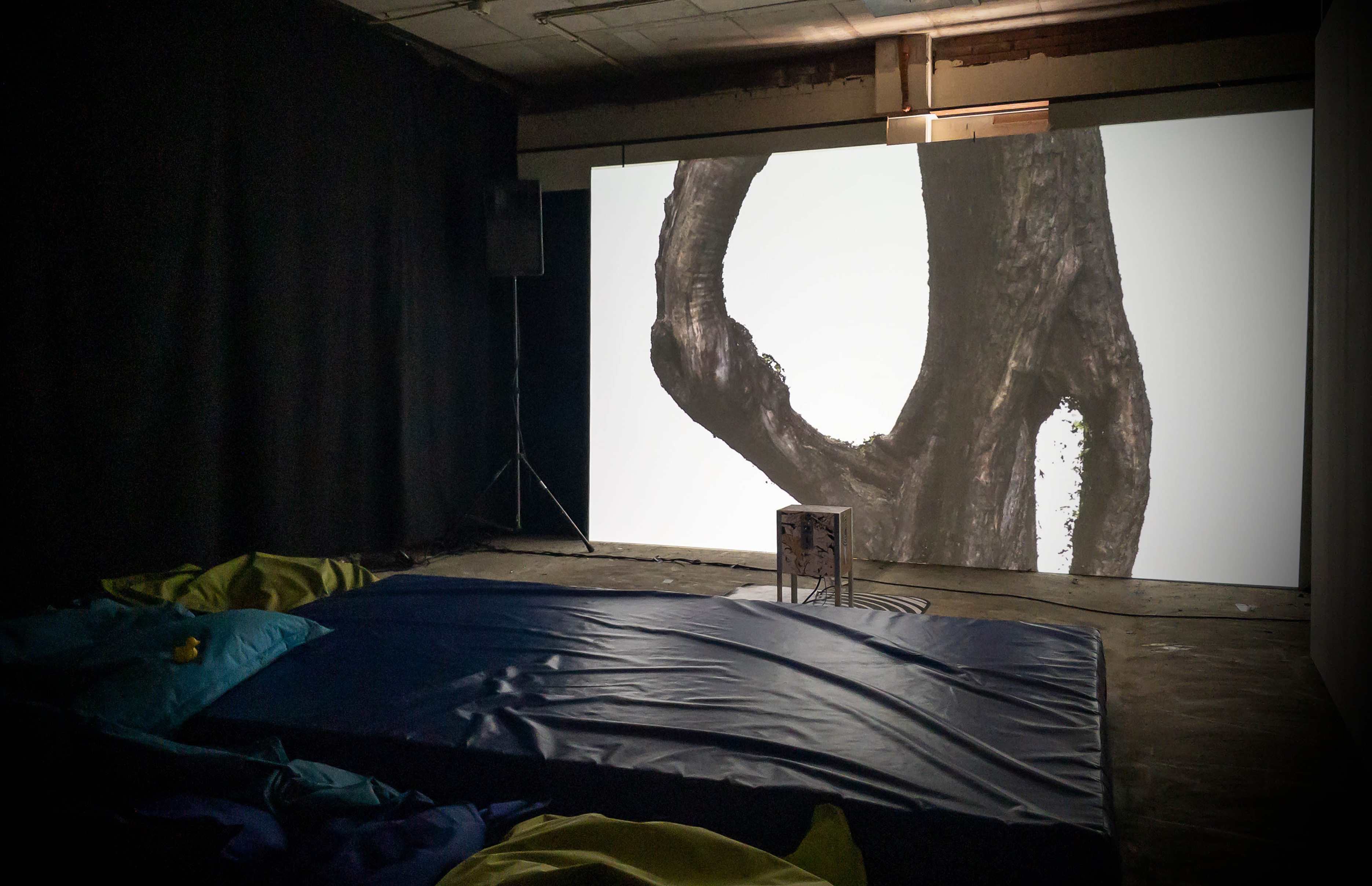
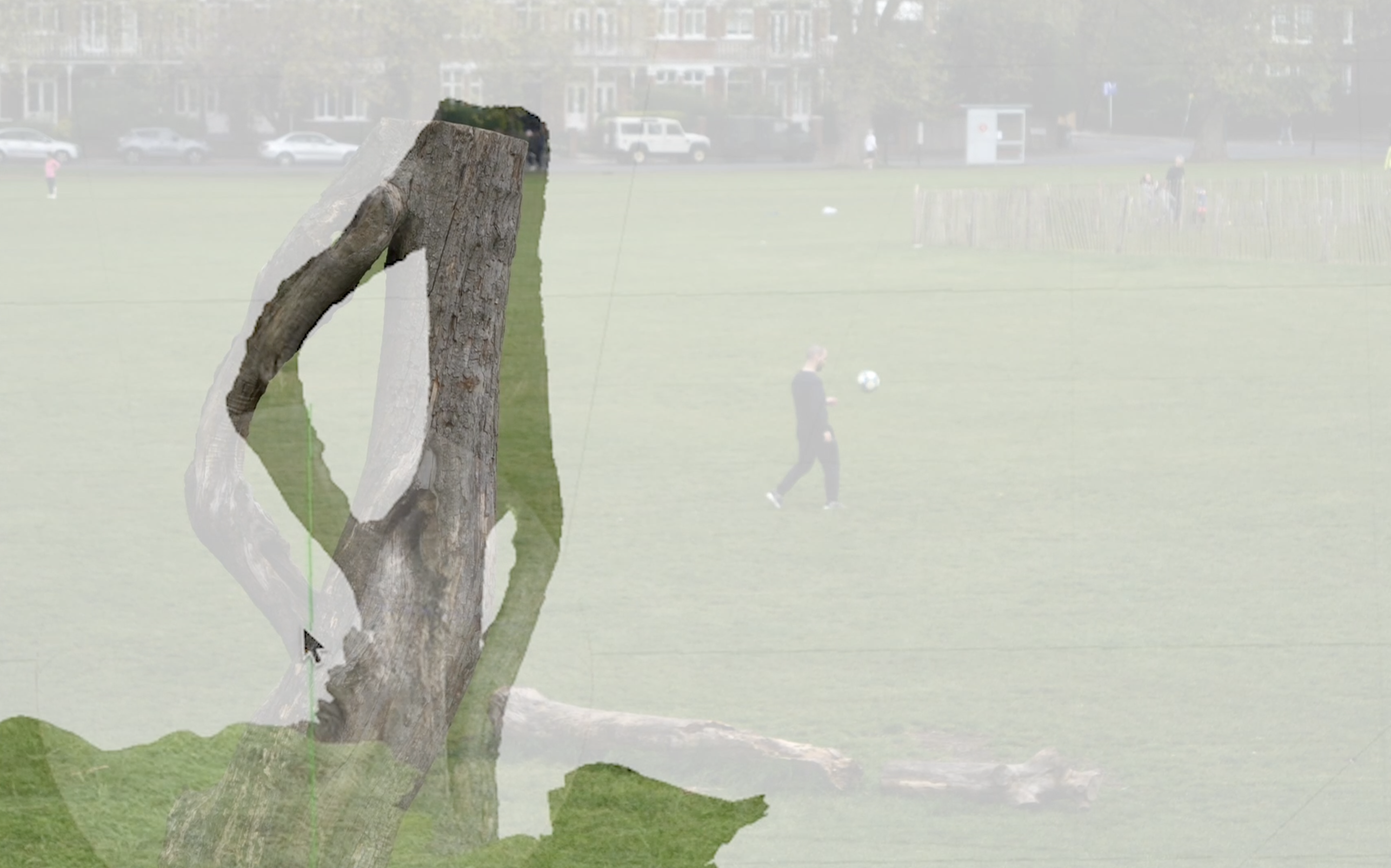

Seven minutes video. In the process of various visualisation stages of a 3D software - a collaboration between an inspecting human operator and a computer - boundaries are being marked, photo angles compared and eventually a digital reproduction of a scenery appears as the image gains photorealistic quality.
Film, Editing, Sound: Alondra Castellanos Arreola. Duration: 7:02min. Thanks to: Nicola Arthen. Support: Prins-Bernhard Cultuurfonds, Niemeijer Fonds.
Screenings: 1 Euro Cinema - Coupled Worlds Online, Telemagic (2020), ROODKAPJE Film Festival (2021), K(O)oRTS Film Festival (2022), Opgedoekt Travelling Light Filmfestival x Kult Kino (2024)



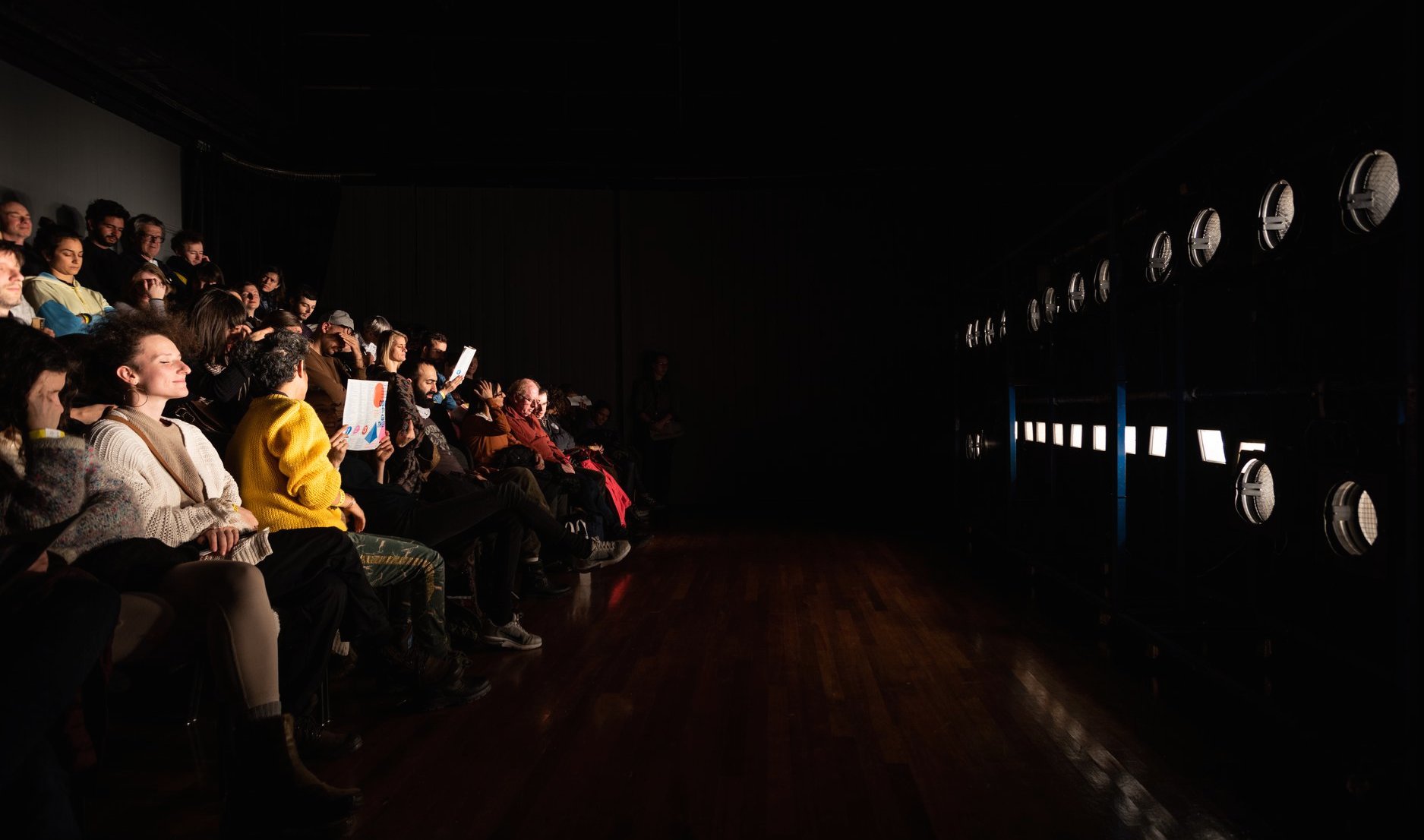
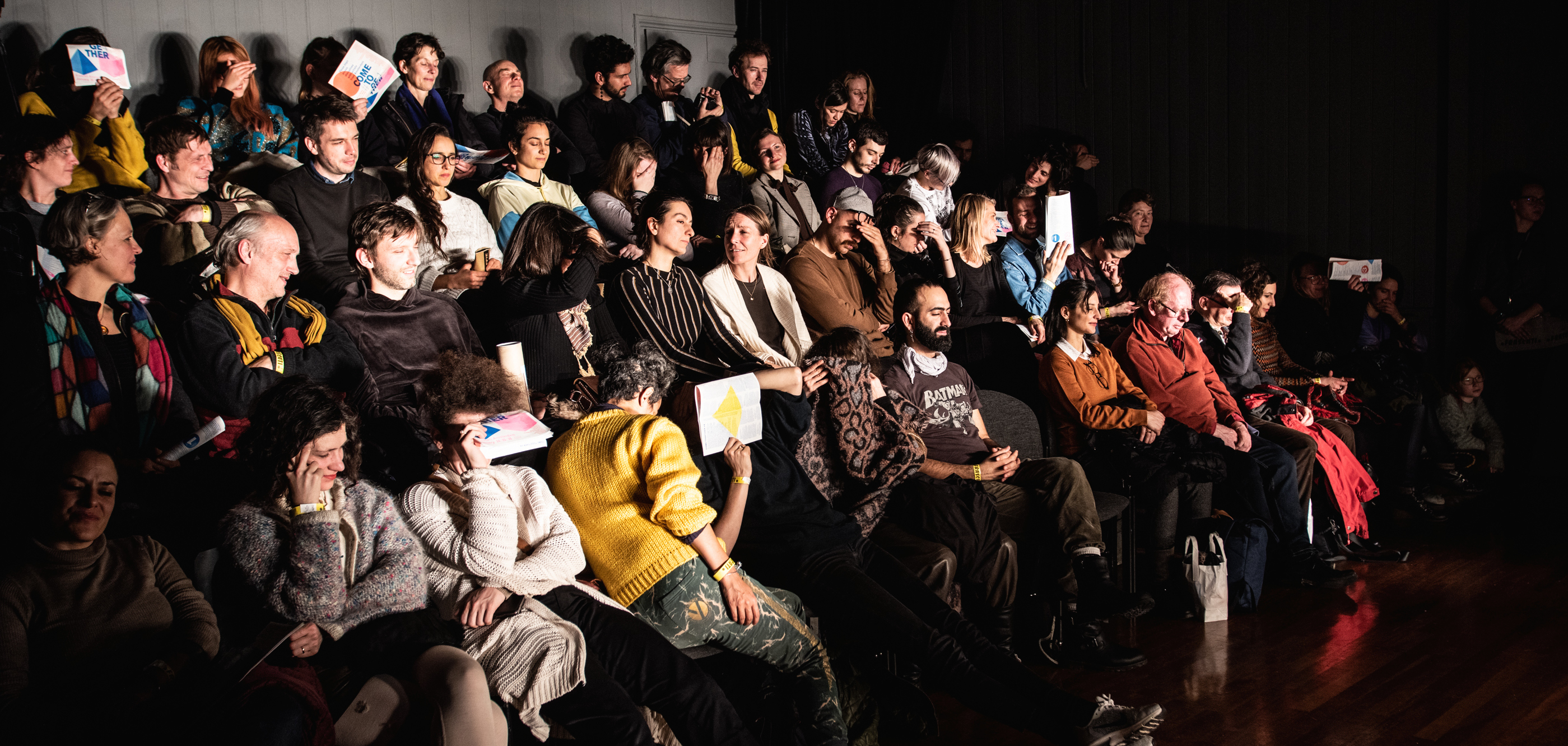
Siblings Dance works with mechanisms of overexposure and contrast, exploring the materiality of light as a stimulative tool to affect the physical state of the audience. It is a dance of disparity, a movement between antipodes.
The performance starts with the reading of a manifesto that later transforms into a soundscape, a dialogue between a performer and the sound coming from the speakers. Further on, two computer screens take over performing a flickering - rhythmic dance to the sound. At last, a rack of 24 theatre-lights is being pushed towards the audience until they are in short distance, slowly changing from a little glowing thread to a blasting light onto the gaze and bodies of the audience, radiating heat.
Concept and performance: Alondra Castellanos Arreola. Sound: Natalia Gómez. Visuals & technical assistance: Oded Rimon. Festival: Come Together #4. Location: FRASCATI Theater, Amsterdam. Duration: 25min.
From future urban landscapes to the fusion between body and artificial materials, or the industrial production of objecthood.


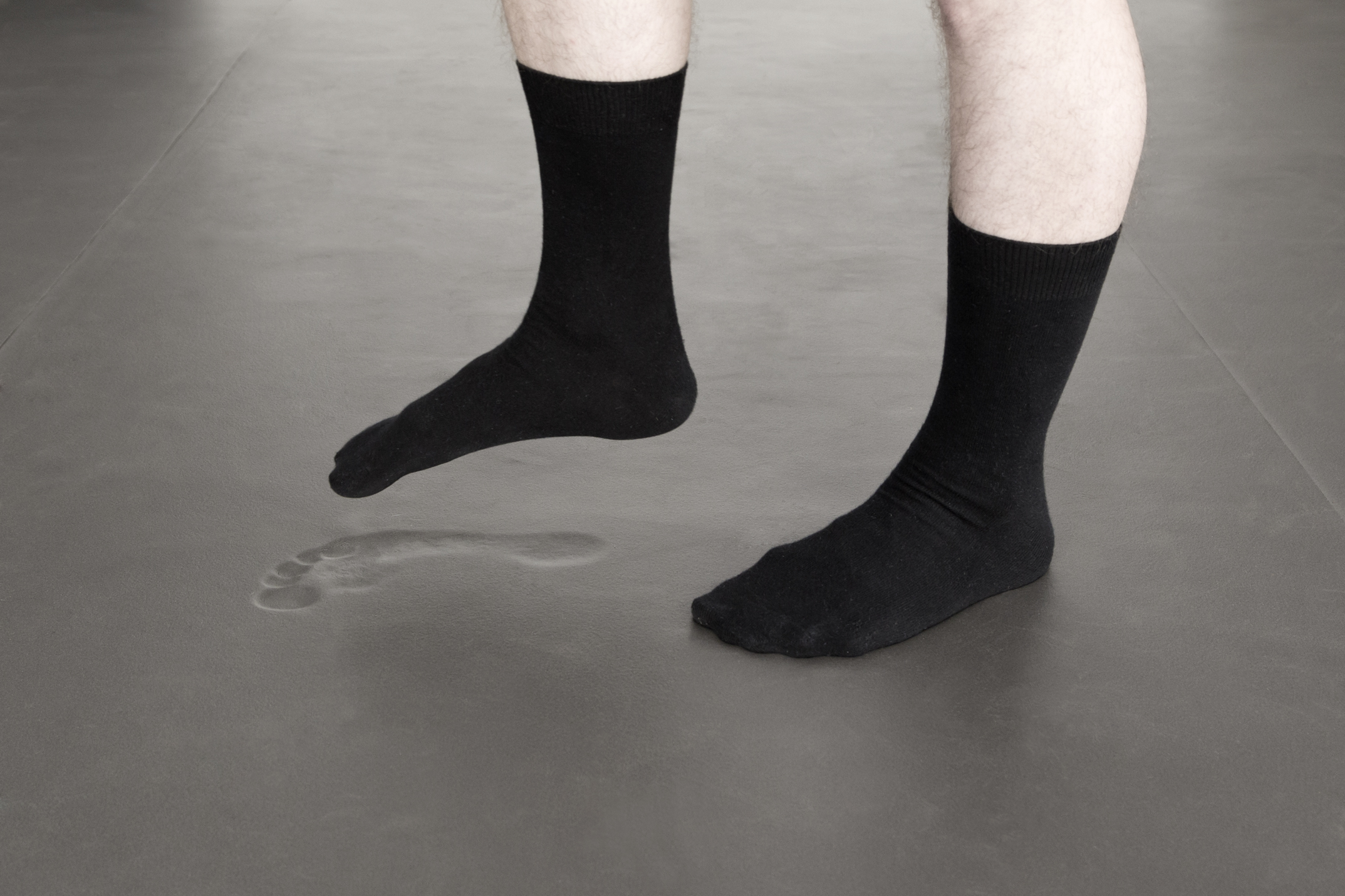
Two centred bodies are turning through a movement pattern, leaving a footprint upon the foamy floor (slow recovery - memory foam) that has being installed in the gallery in order to connect several spaces, walls and hallways; giving a new surface to be explored when walking by the soft impact to the soles of the feet.
Moton Actuator Tour is a group exhibition with Nicola Arthen, Ivo Rick and Alondra Castellanos Arreola.
The exhibiting artists explore current technological strategies of visualization, such as those of 3D body scan, and sensing technologies, like the ones used by self-driving cars, and render possible new translations between machine-made objects and the human body or the architecture. The references to visuality and tactility, disclose questions regarding technology's capacity to get to know the world. For example, viscoelasticity turns into technological production of what Marcel Duchamp called infrathin, referring to that which is almost impossible to perceive. The present sculptures, performance, and prints suggest numerous technological infrathins. Softness becomes 3D printing's highest feature of form-making. Or waterjet cutters insert traces of dust into object's shapes. The non-linear translations brought about by the artworks, tap into the depths of how algorithmic patterns appear in the logic of object production and design, artificial and human motion, or the shape of virtual accidents.- Text by Helena Grande.
Concept and choreography: Alondra Castellanos Arreola. Performance: Simon Gunnarsson and Charlie Prince. Sound: Konrad Wehrmeister. Location: LOVAAS, Munich. Duration: 25 minutes
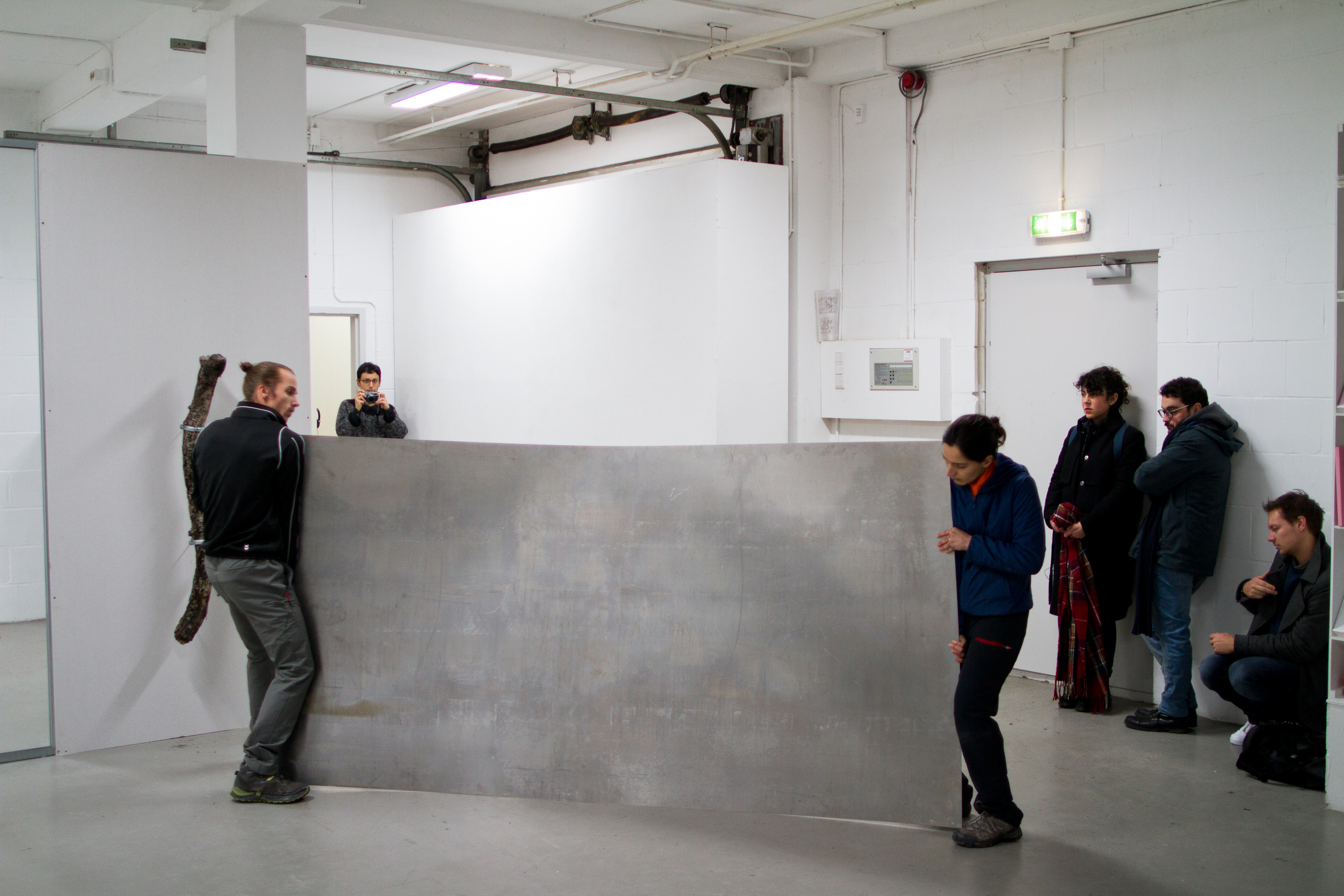

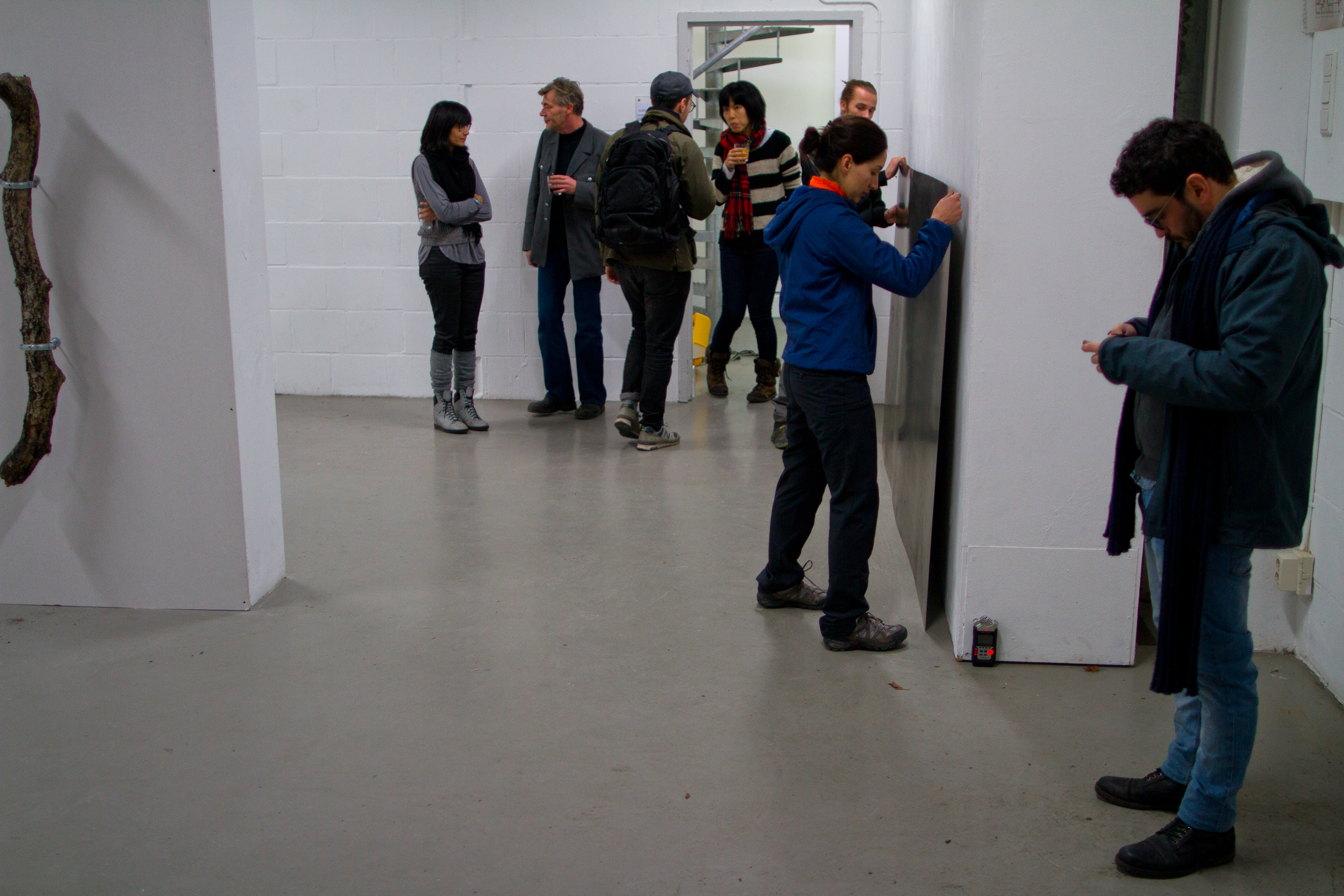
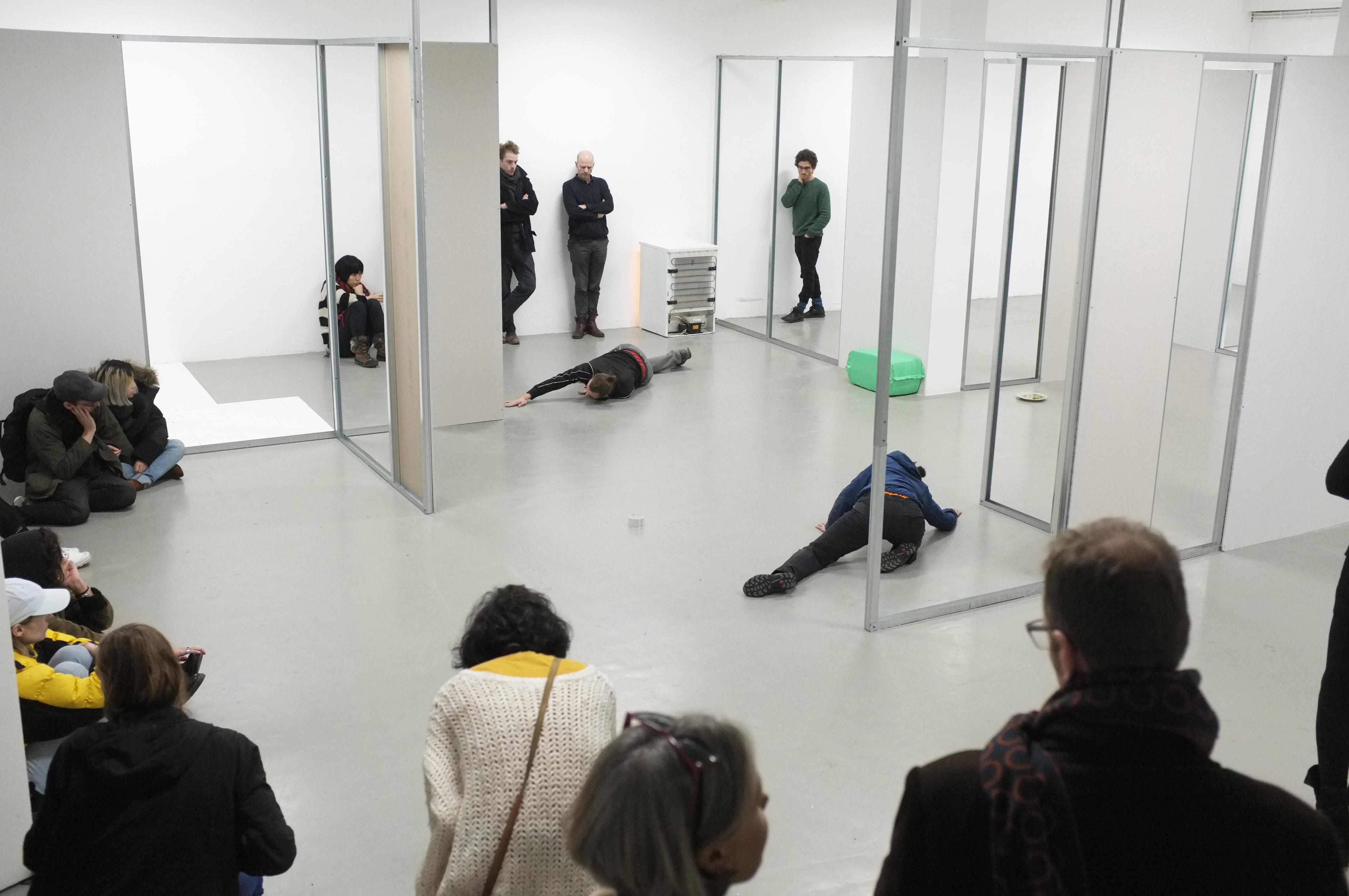
A choreography for two performers and a steel plate (1.38m x 2.70m x 1mm)
The performers search for methods of touching, hearing and dating the surface, while rerouting the gaze and affection towards the ground, where all things are holdovers.
Whether attracted or not, connected, communicative, comfortable or not, things stay and pose on the ground with the calm of fuelwood just placed on a campfire.
Choreography: Alondra Castellanos Arreola. Performance: Luuk Weers & Alondra Castellanos Arreola. Duration: 40 min. Location: P/////AKT, Amsterdam. Thanks to: Nicola Arthen, Luuk Weers & Rob List.
A performance in response to the exhibition 'The Form of Decay' by Nicolás Lamas. This event marks the conclusion of P/////AKT’s 2017 exhibition program. Curator/writer Vincent van Velsen and artist duo Sander Breure & Witte van Hulzen.
Publication, 2018: Thinging
Somebody enters a bath house and minutes later finds themselves in a warm pool among others.
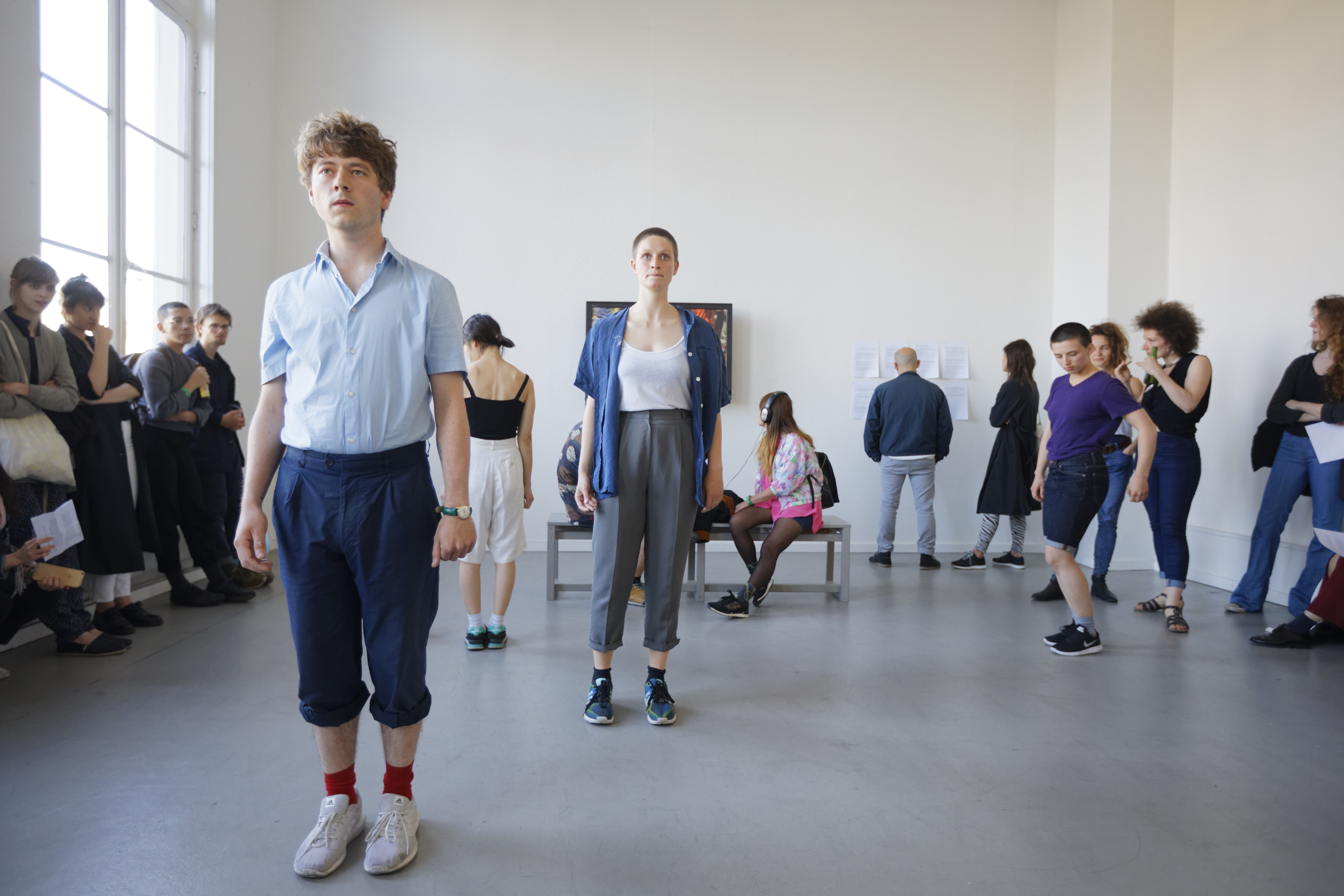


The performance is composed of six performers each situated in a different room of the gallery. Six isolated figures as containers of a singular quality and attitude, individually performed, and emphasised in the moments of proximity. In this way, the animation of these figures is different from one another but as well associated to one another within the movements developed from the position, direction, timing and the occasional contact between the performers. Bowling balls are rolling through the space, balls diffusing smells are spread over the rooms, and objects almost invisible to the passing-by-eye are used by the performers to articulate movement. These figures neither move alone nor together but are in transition between connections and disconnections.
Concept and choreography: Alondra Castellanos Arreola. Performance: Masaki Komoto, Martin K. Pedersen, Yookyung Park, Charlotte Mathiessen, Charlotte Petersen & Luuk Weers. Assistance: Christie Bakker. Video: Chun-Han Chiang. Outside eye: Tchelet Weisstub & Jay Tan. Duration: 2 hrs. Location: Arti et Amicitiae (FLAM Festival 2017), Amsterdam. Support: AFK (Amsterdam Fund for the Arts) & FLAM festival.
Review
Video
It is a simultaneous presence of warm and cold air on our body that can make us as sensitive to a present moment where any wish for a place elsewhere is suspended for some time.
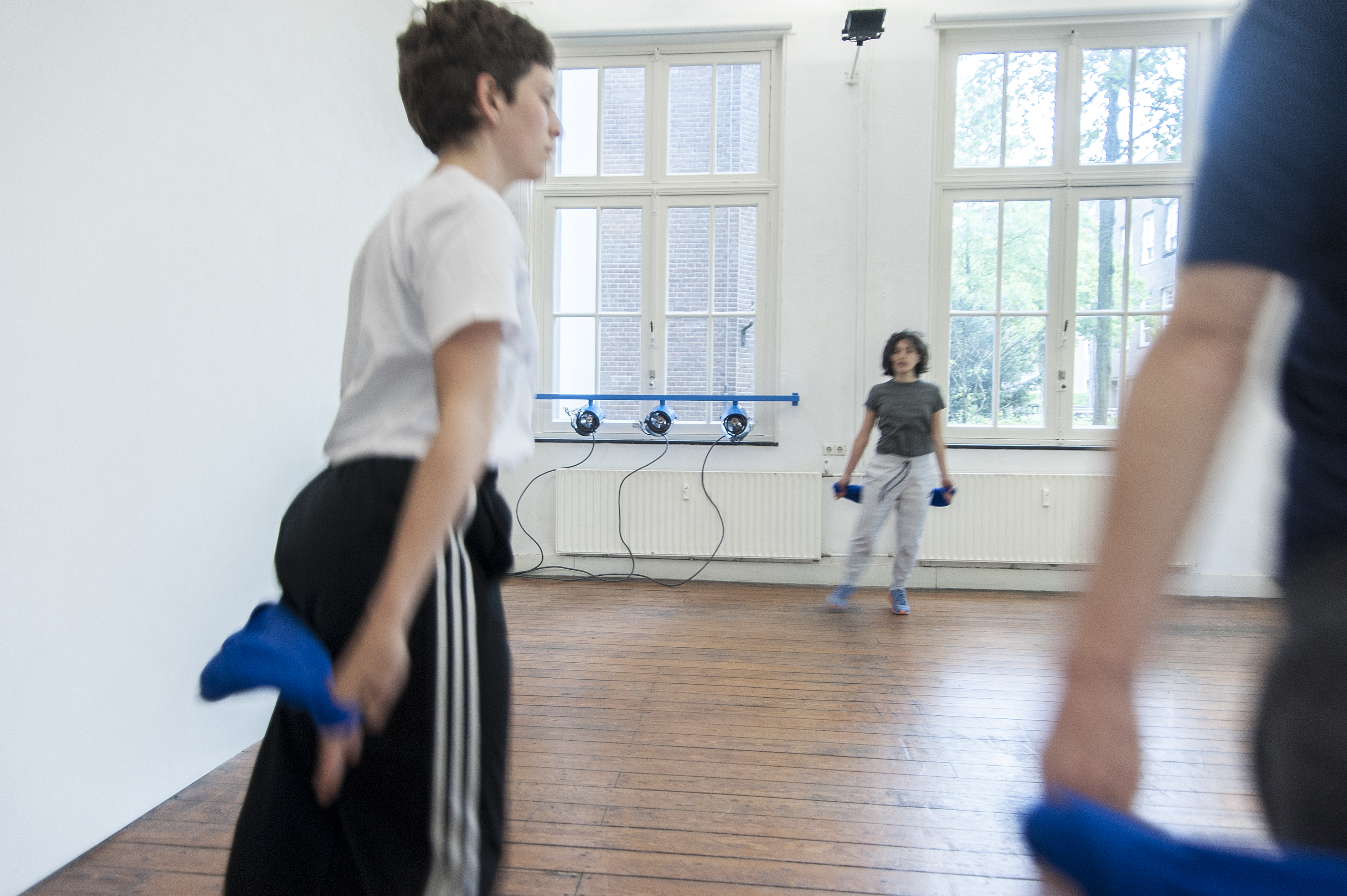
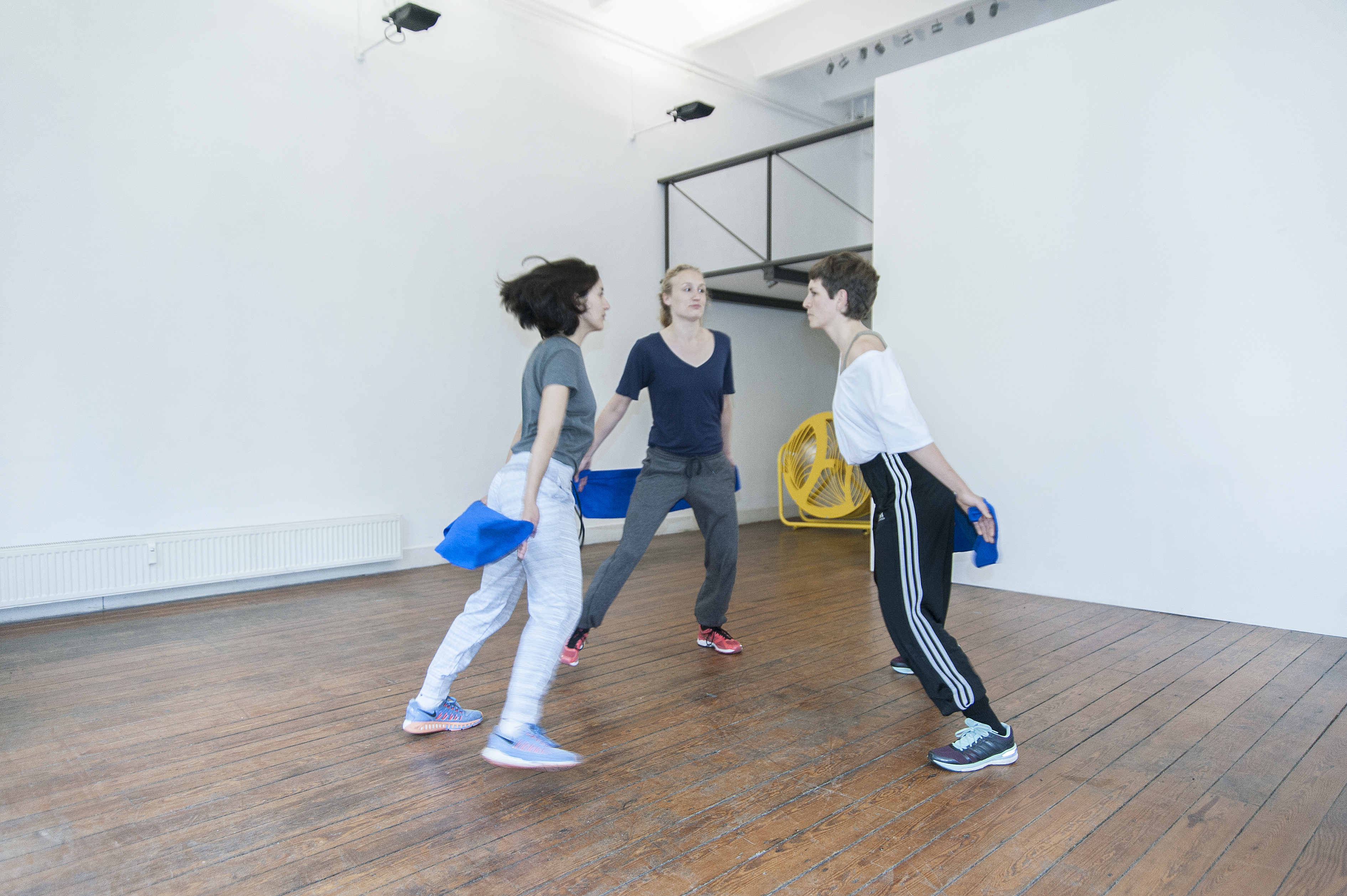
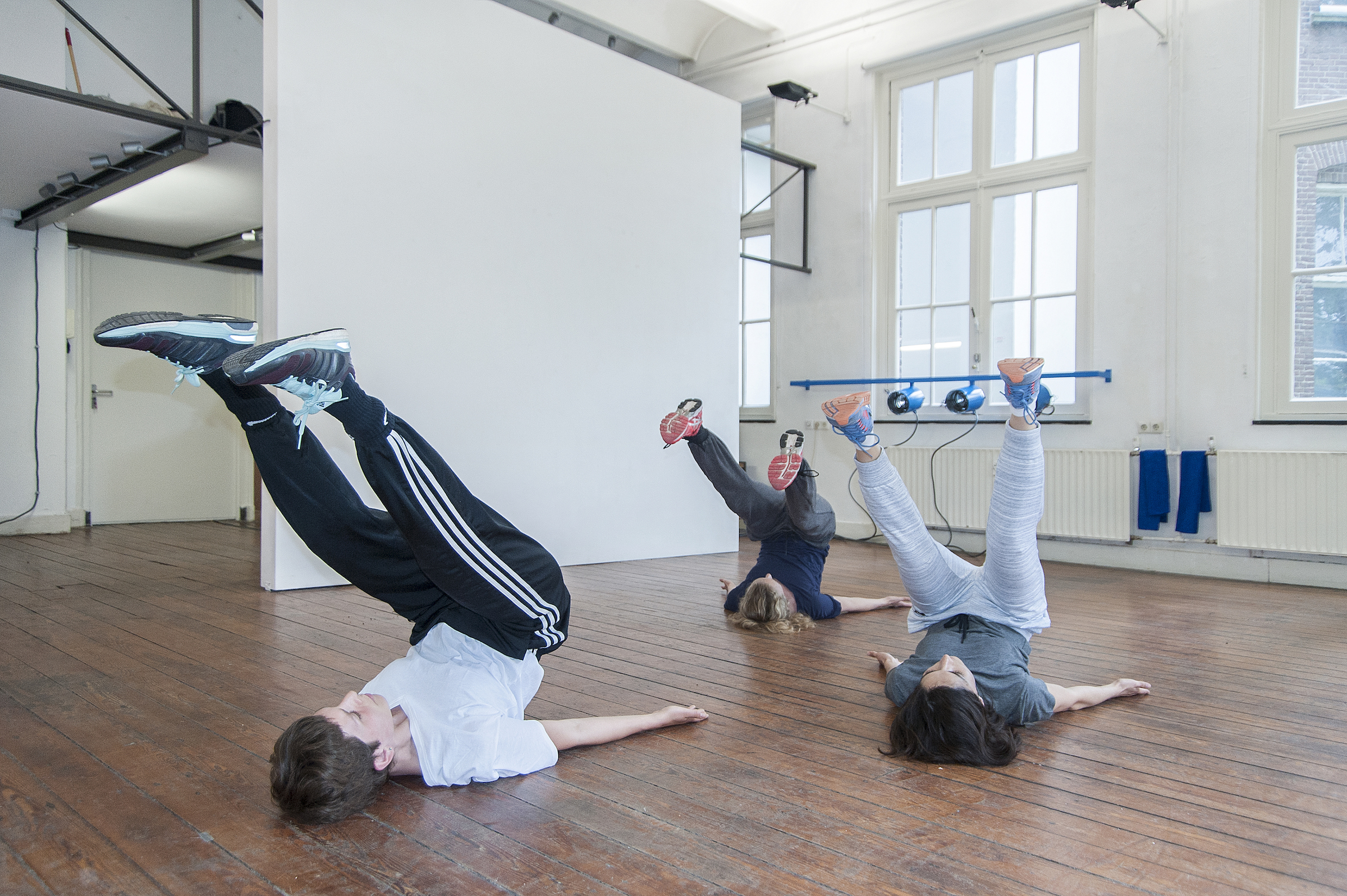

The performance is composed of one industrial ventilator, three electrical blow-heaters, and three human performers. The pronounced temperature of these machines produce a sound and the relays click while switching the machines on and off. There is a very technical setup, scripted and appropriated in its character: a board of relays, cables, a microprocessor as well as adjacent electricity cords that run visibly in the space. It seems, as if a weather has been imported inside an exhibition space, bound to the performance of certain machines and their newly-industrial aesthetic.
The role of the human performers in here is somewhat passive but highlighted by two movements. First, the three performers lower their legs in slow motion, showing immense power in the (mechanical) joint of their hips. The body temperature is visible as the performer's skin is increasingly changing colour of their cheeks and hands, emphasizing the pronounced temperatures of the space that is everywhere noticeable in the room, but nowhere visible. Second, the performers move in circles motivated by a dialogue happening between two automated machines performing under a previously programmed script. In this way, the three human performers move conditioned to the rhythm that these machines perform. At the same time, and as a consequence of the orbiting movement of the three performers, the visitors are forced to move backwards against the walls, leaving a large space in the centre somewhat cleared for the two streams of air – hot and cold – to blow out and be circulated by the performers.
The Weathers They Live In was a group exhibition initiated by Nicola Arthen. It included a reading by Baha Görkem Yalim, a performance by Alondra Castellanos Arreola, a large-scale installation by Nicola Arthen and a sound work by Dan Walwin. - See exhibition website
Choreography: Alondra Castellanos Arreola. Performance: Loes Schaap, Erin Lamontagne & Alondra Castellanos Arreola. Duration: 25 minutes. Location: Punt WG, Amsterdam
It is said that the amount of images that we see in one day resembles the amount of images that somebody would be able to see in its whole life back in the middle ages. Glass is one of the materials that has more influence on the incorporation of an external (artificial) apparatus into our body, as it had been realised with the use of lenses and further developed into all kind of image transmitters nowadays.
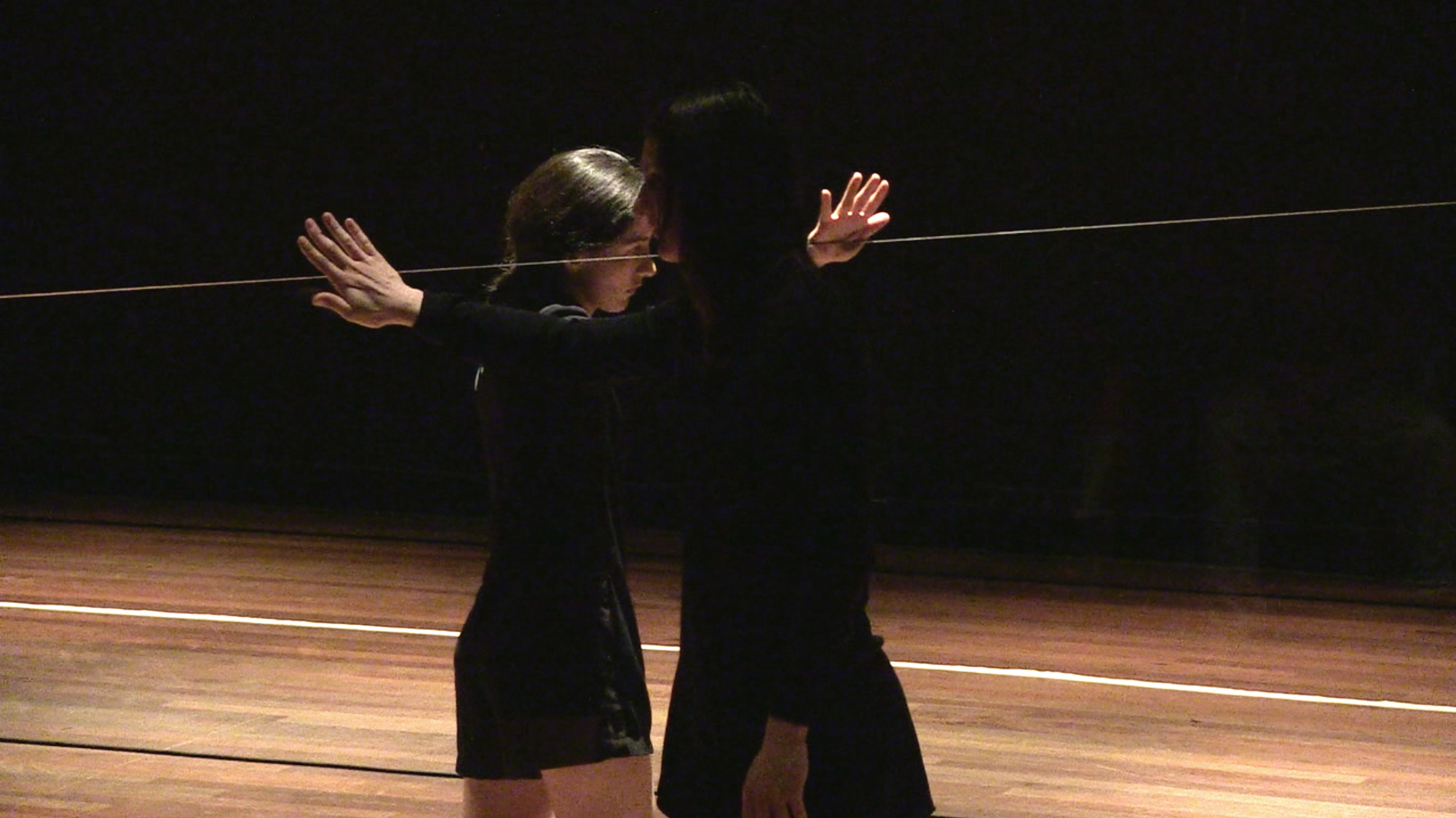

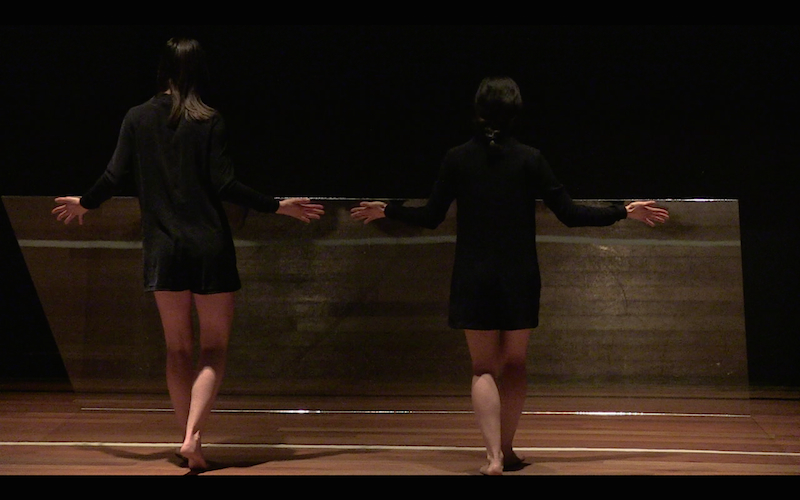
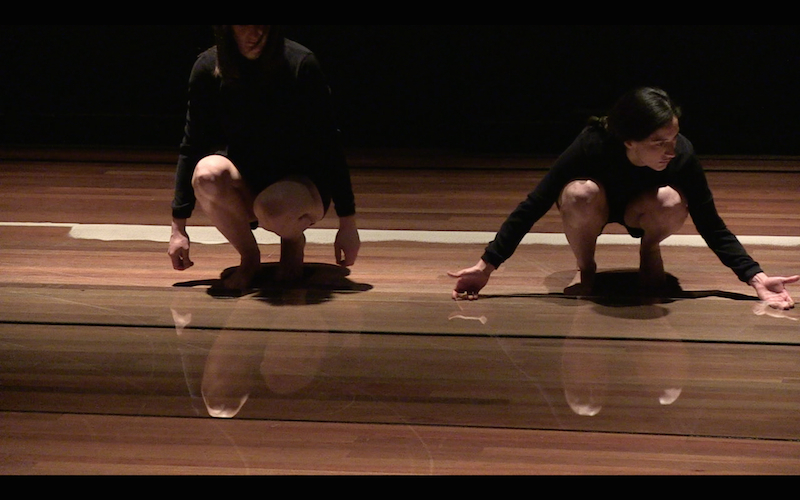
A choreography for two performers and a glass plate (3m x 1.60m x 6mm)
The glass plate in the performance is used as an instrument and image catcher. At the beginning, a video showing an overload of images is being projected to the exact size of the glass plate. From there, the glass is being displaced through the room, leaving the projection behind creating new images from its surrounding that are captured due to the transparency and reflection of the glass. The movement of the two performers carrying the glass plate is defined by the heaviness and fragility of the material, while it is being lifted and rotated through a circular trajectory in the room.
Concept and choreography: Alondra Castellanos Arreola. Performance: Fleur van den Berg & Alondra Castellanos Arreola. Video: Tijmen Hauer. Advise: Emilio Moreno and Rob List. Duration: 45 min. Location: FRASCATI theatre, Amsterdam
A wall has been placed in the middle as an intervention to the theatre space. It is three meters high and seven meters long, coming all the way down the tribune entering halfway the stage.
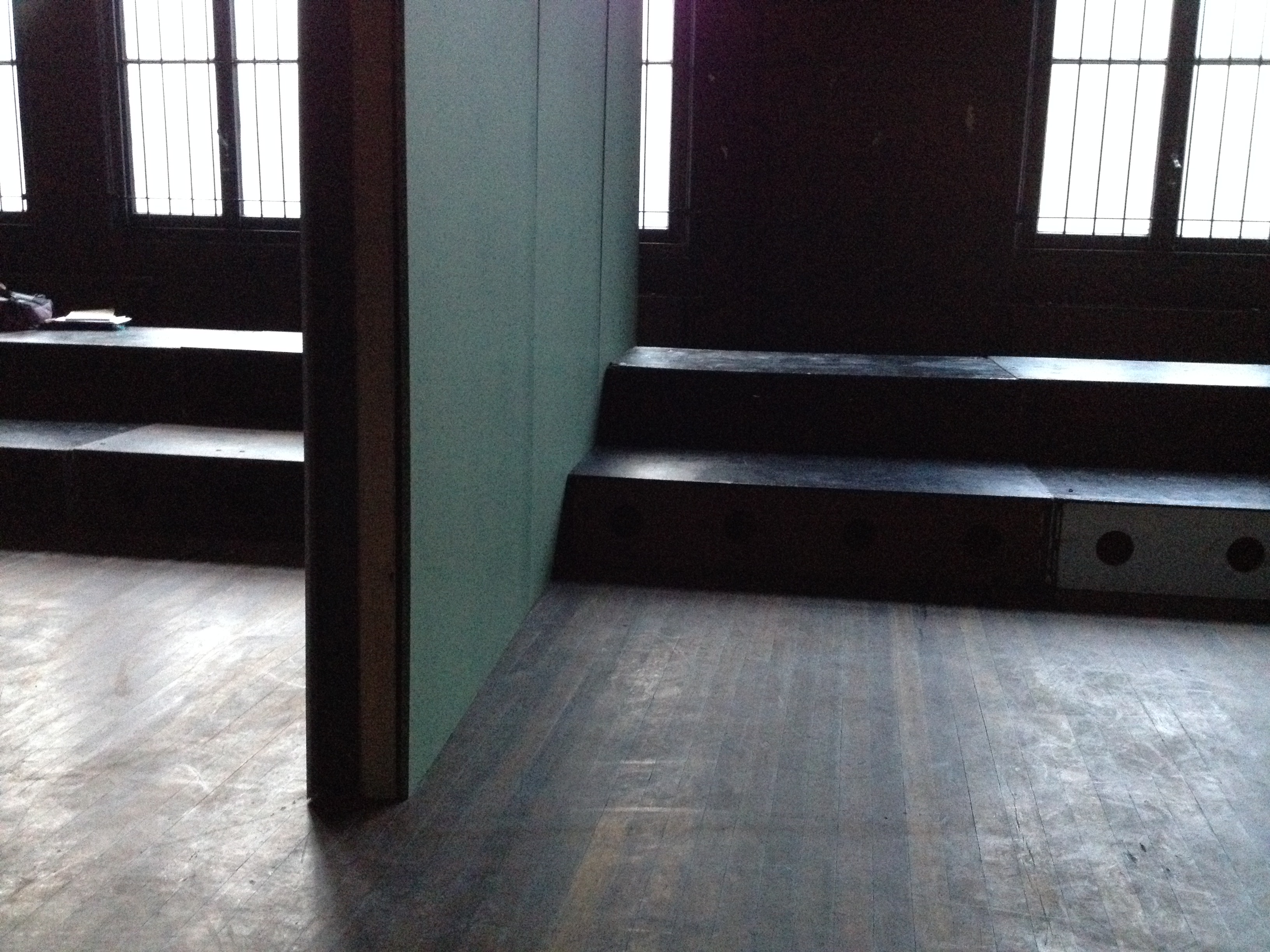

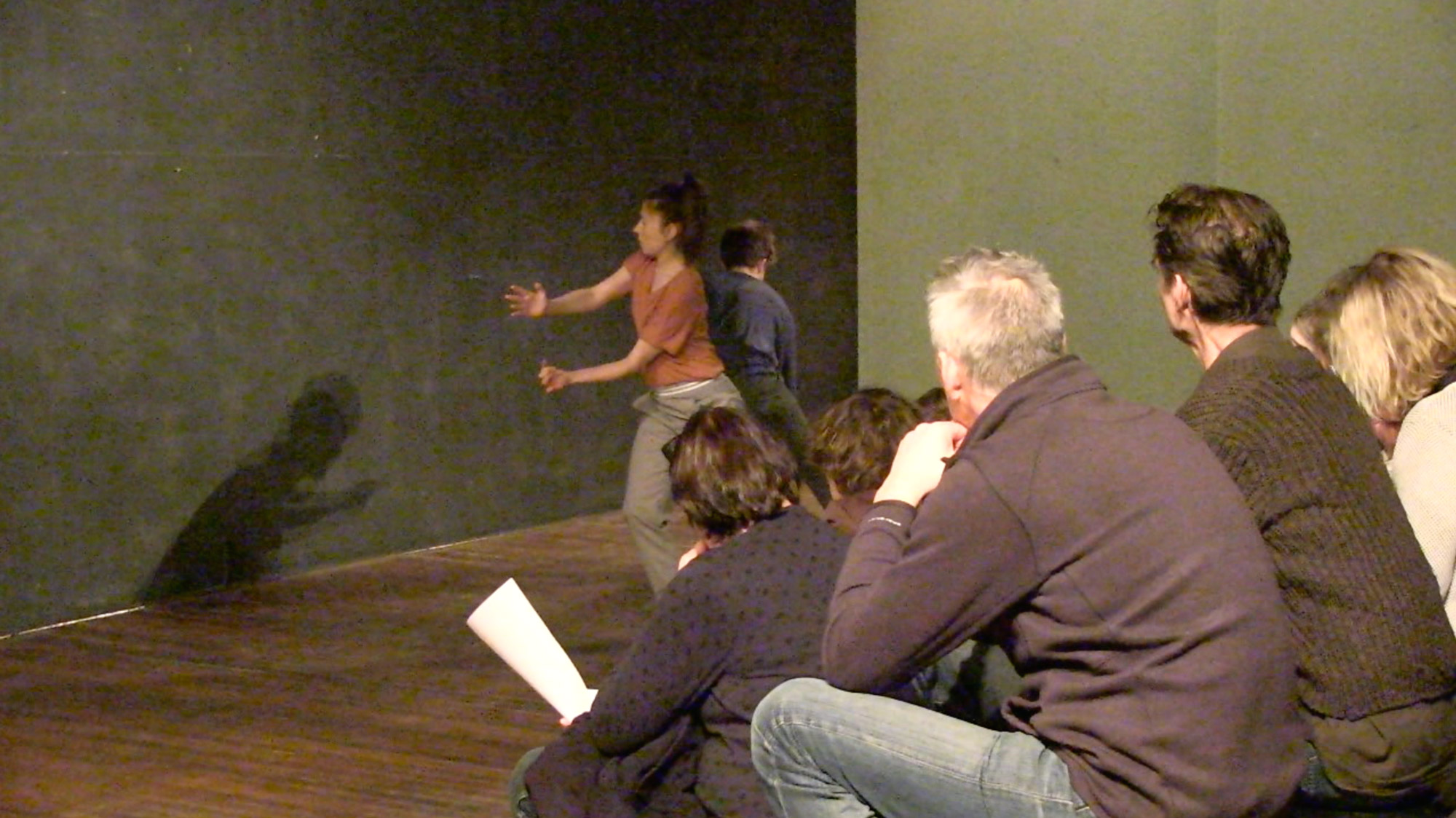
In the performance, the wall crops and defines the range of vision of the choreography made for two performers. The audience is sitting on both sides of the wall when the two performers stand up, each being on a different side of the wall. A slow movement drags the performers to the wall like two magnets. On this trajectory towards the front the second performer is becoming slowly visible from the other side of the tribune. Once reaching the front wall of the room, both performers get into stillness together with the wall and the rest of the room around them.
Concept and choreography: Alondra Castellanos Arreola. Performance: María A. Peralta & Samuel Feldhandler. Sound: George Dhauw. Advise: David Weber-Krebs and Rob List. Duration: 45 minutes. Location: Lindengracht 93, Amsterdam
A bench as a performance in public space. A station for time out where you can get some shut eye, listen, absorb the city or take a nap. Let yourself be porous in the rush of the city.
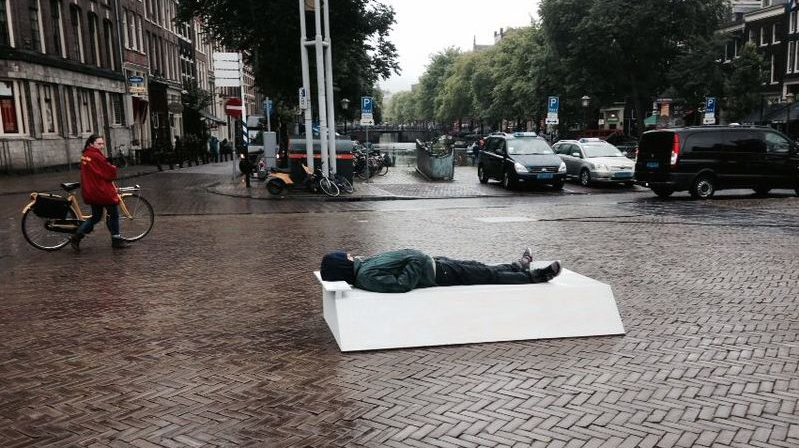
The bench has been placed in a busy square of a city at the service of anybody passing by. The performer is orbiting around the bench taking care of a person laying down, resting, listening.
Concept & Performance: Alondra Castellanos Arreola. Material: Painted wood. Dimensions: 46cm x 58cm x 190cm. Duration: 4 hours. Location: Nieuwmarkt, Amsterdam
One might live surrounded only by coconuts. A choreography for two performers and thirteen coconuts.


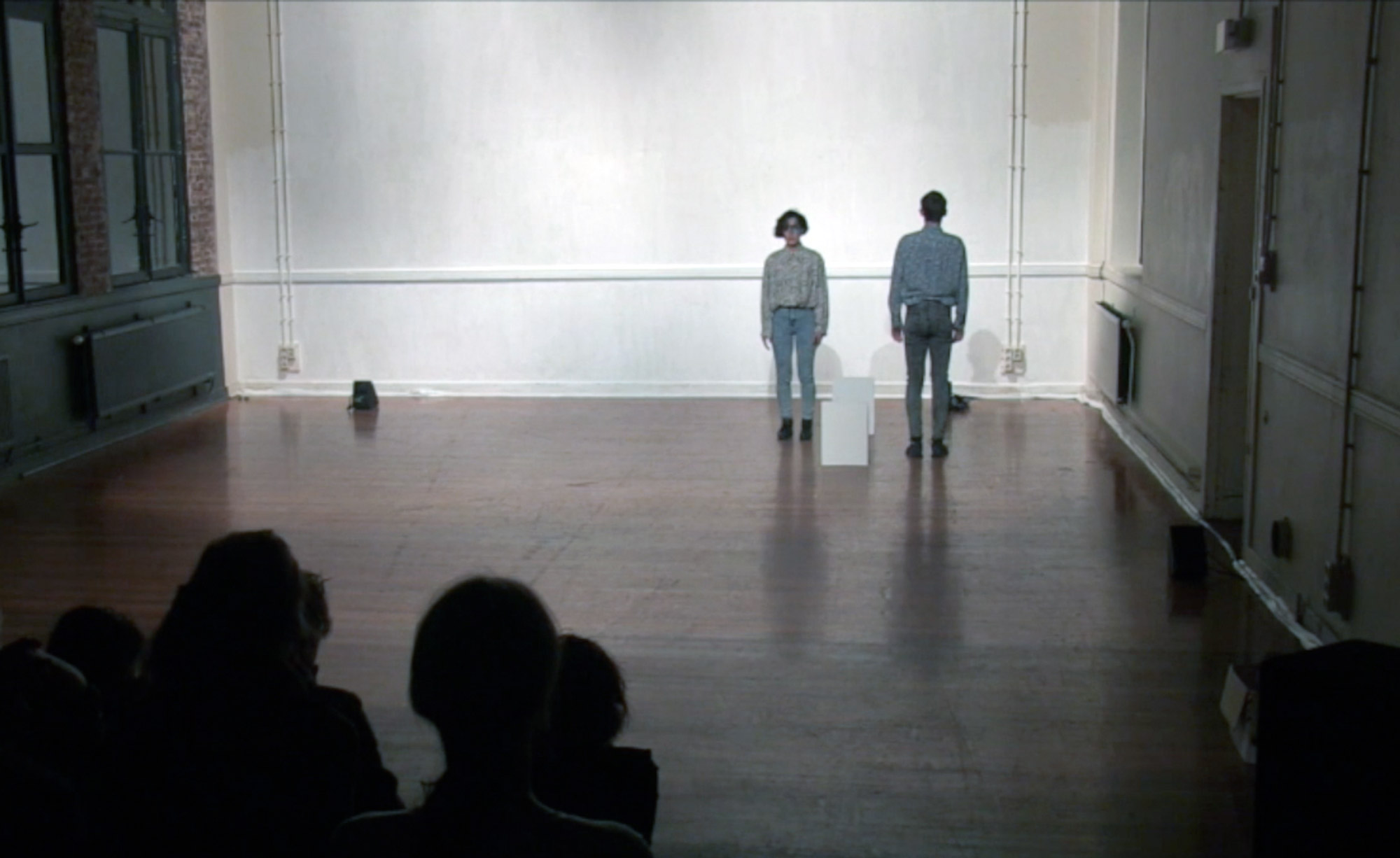
Drawing from the fragmented-moment quality in Japanese animation films, this performance amplified texture, sound and speed. Exploring the use of a close-up, a Foley or letting something appear in slow motion, the performance brings the attention to the introspective and sensorial experience that the character is going through. The narrative in this case is not based on a story, but is built from a succession of images that add to the inner world of the character.
Choreography: Alondra Castellanos Arreola and Thibault Maillard. Sound: George Dhauw. Advise: David Weber-Krebs and Katerina Bakatsaki. Duration: 45 minutes.
2013 Lindengracht 93, Amsterdam (NL), 2013 Stamm, Porrentruy (CH), 2014 Kid Ailack art hall, Tokyo (JP).